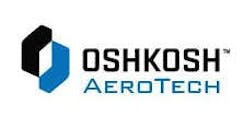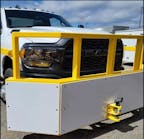By Joseph Suidan, assistant director, ISAGO program implementation & auditing dept.
During the Aviation Industry Expo held in Las Vegas on March 17, 2010, the IATA Safety Audit for Ground Operations was discussed in a session as the program continues to gain momentum and interest around the world.
Following on the success of IOSA program for airlines, IATA has applied the same approach to ground handling safety. Ground damage was the second most predominant type of accident in 2009, accounting for 10 percent of the year’s accidents. Each year, ground damage costs the industry nearly $4 billion. The primary aim of the ISAGO program is to drastically reduce aircraft damage and personal injuries.
The ISAGO program was launched in February 2008. Headquarter audits are conducted by independent audit organizations accredited by IATA, and station audits are conducted by qualified auditors from member airlines that work in a pool managed by IATA. As of this month, 40 ISAGO pool member airlines consisting of 195 ISAGO qualified auditors have conducted 150 ISAGO audits around the globe. To date, 31 ground handling companies are on the ISAGO registry, meaning that their corporate audit and at least one of their stations has been fully audited (the registry listing can be found at www.iata.org/isago) at 34 locations around the globe.
It has since gained the support of civil aviation authorities in the United Kingdom, France, Netherlands, Belgium, Austria, Lebanon, Jordan, Ethiopia, Nigeria, Chile, Macau, Hong Kong, Russia, Canada, and the United States. Some major airports around the world are also supportive of ISAGO and in particular, Amsterdam Schiphol Airport is making ISAGO a condition for issuing an operating license by October 2010 and Seattle-Tacoma International Airport is making ISAGO mandatory for all contracted ground handlers starting January 2011.
With both airlines and handlers stretched to their financial limits during the industry crisis, the program had to recognize these limitations. In terms of making the audit simpler for both airlines and handlers, IATA has embarked on a program to rationalize and reduce the audit standards. We are aiming to achieve the same audit result — in terms of assessing operational safety capability — but in a smaller package. The original suite of standards requires the presence of a three-person audit team on site at a station for up to three days, depending on the scope of services offered by the handler at that station. We did shave at least 20 percent off that timeframe, with further improvement as we go along and build experience. The second edition of the ISAGO Standards Manual is available on the IATA website (http://www.iata.org/ps/certification/isago) and include the corresponding checklists.
New Audit Cost Structure – savings for handlers
Using a pool of airline auditors to conduct station audits has enabled IATA to keep this part of the program cost-free for handlers, since the airlines doing ISAGO audits are essentially doing those audits in replacement of a regular airline station audit they would have done anyway. But with the corporate audits, IATA is currently committed to using audit organizations, and since these are commercial entities, they need to be compensated. The corporate audits occupy an audit organization auditor for just two days on-site, but with preparation, evaluation of corrective actions and close out of the audit, the total audit effort is evaluated at US$5,000, which is billed to each ground handler.
Corporate audits are done every two years, and even though these amounts are relatively small, IATA has found them to be an impediment for many handlers wanting to move forward with ISAGO. Accordingly, IATA has been evaluating how best to solve this problem.
Recognizing the economic crisis that our industry is currently facing, IATA has exceptionally covered the US$5,000 professional fee throughout 2009. For 2010, IATA will continue to finance a limited number of corporate audits. Priority will be given to GSPs undergoing renewal audits and those that have submitted audit requests in 2009, but due to resource limitations were moved in 2010.
Training
There are two categories of training. First, there is the five-day training course for pool member auditors, mandatory for any auditor planning to qualify as an ISAGO auditor. It is free of charge for the ISAGO pool members.
Second, there is the three-day training course for the ground handlers, for a minimal fee, to help them prepare for their ISAGO audit. This latter course is run in key IATA locations and is also offered “in-company” — an option that is growing in popularity. A schedule of all ISAGO training courses are available on www.iata.org/isago.
ISAGO Data
Just as IATA is a natural fit to run a global safety audit program for ground handlers, it is also appropriate for IATA to start a ground accident and incident data collection and analysis program. Over the years, there have been several attempts to get a global perspective but with little results. IATA launched a data analysis task force working in parallel with the ISAGO program development, consisting of airlines, handlers, regulators and the insurance industry. Additionally, organizations such as Flight Safety Foundation and the International Aviation Handlers Association (IAHA) have been highly supportive and have committed data to the exercise. All participants agreed that the project needs to go beyond just the collection and categorization of accident and incident data to include the causes and contributing factors.
Insurance Benefit
Having the insurance industry involved since the outset of the program is already paying dividends. Insurers have a natural interest in any program that could reduce ground damage, and hence claims. Because of that close c0operation, ISAGO provides a unique opportunity for the industry to bundle its aviation insurance buying via an insurance program. This program is now being finalized, and ground service providers that are ISAGO registered will be eligible for the program. Participants will be benefit from increased market presence, lower premiums, better coverage, and better claims handling.
2010 Targets
The IATA Board of Governors has set a target of 120 audits to be achieved in 2010, and we are confident this will be met. The IATA’s Board of Governors also fully supports the development of the IATA Ground Operations Manual- (IGOM). This manual has the potential to bring both efficiency and safety improvements in ground operations, and will benefit both airlines and handlers.
Currently, each airline publishes its own Ground Operations Manual that details how the airline requires its aircraft to be handled at airports throughout their network. This individual airline approach can lead to significant variations in requirements and standards that have to be applied by ground handlers even when handling the same type of aircraft from different airlines parked on adjacent stands. In the operational environment, this lack of consistency and simplicity often leads to confusion. In certain circumstances this confusion can lead to an increased safety risk to handlers and the aircraft.
The IATA Ground Operations Manual can be adopted by airlines as their “core” set of requirements whilst always recognizing there will be a need for some customization to cover individual government and company policies. The development of this manual will be a high priority project for IATA in 2010.




